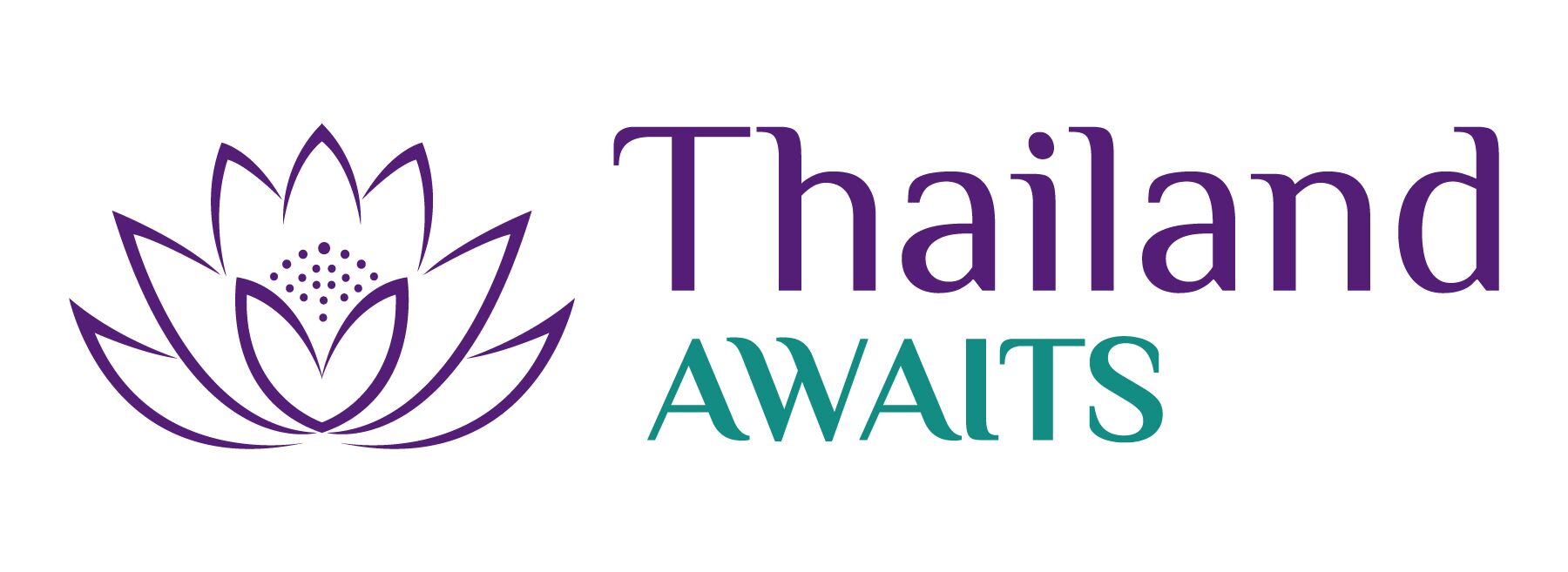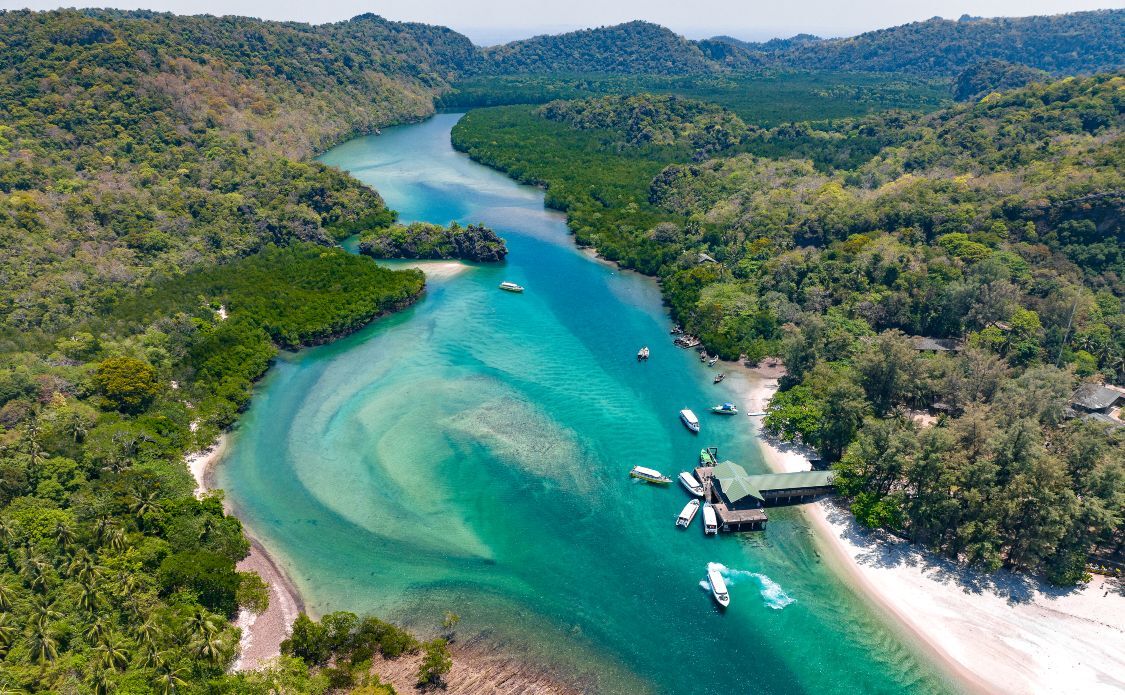There are walking trails and snorkelling trails, giant lizards and the boom of unseen gibbons in the trees. And much, much more. Thailand’s network of national parks is one of the country’s greatest, even if least-heralded achievements. With too many excellent parks to detail, we’ve cherry-picked a few of the best.
This page contains affiliate links. You can read our full disclosure here.
Khao Sok National Park, Surat Thani Province
Some of Thailand’s last remaining tigers and wild elephants survive in Khao Sok National Park, a realm of 740 sq km of rainforest, freshwater lakes and karst pinnacles.
It sits roughly midway between the Andaman and Gulf coasts, 150km north of Phuket or 85km from Khao Lak, and is part of a cluster of reserves that forms the largest contiguous wilderness area in Thailand.
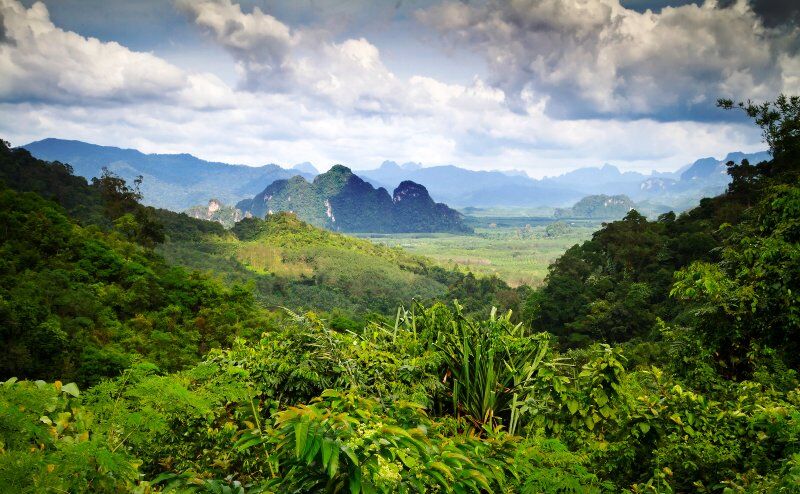
These forests are home to animal species like gibbon, civet, leopard, pangolin and barking deer, and around 180 species of birds.
The liquid jewel at its heart is Cheow Larn Lake, an extension of the giant reservoir that powers Ratchaprapha hydroelectric dam.
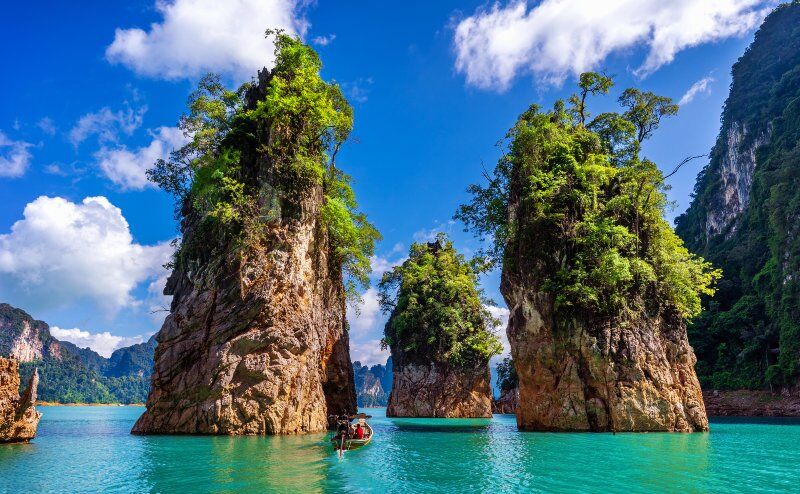
Paddle the lake or the lazy Klong Sok River on a kayak. All is silent, and then you round a bend to spot an electric-blue kingfisher or a viper snoozing on an overhanging limb.
There’s good accommodation in lakeside “raft house” cabins, as well as the luxury Elephant Hills tented camp or Khao Sok Nature Resort, both just outside the park.
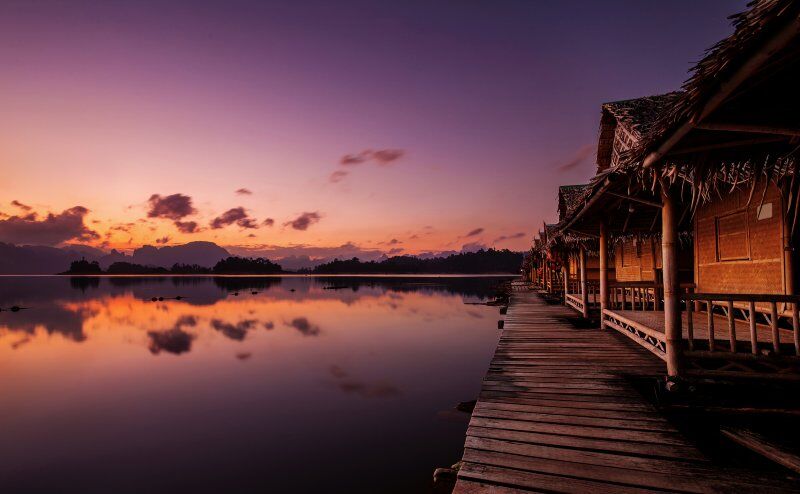
When staying in Khao Sok National Park, most visitors choose either to stay on Cheow Lan Lake in over water or floating bungalows or floating raft houses. You could also choose a tree house in the rainforest.
WHere to stay near Khao Sok National Park
We highly recommend you spend at least 2 nights in or near the park. You won’t be short of options, but two we like are:
* Khao Sok Nature Resort – Stay in a tree house, 500m from the park entry gates.
* Panvaree Resort – This floating hotel offers everything from budget rooms to deluxe villas
You can see a range of boutique and budget hotels near the park here.
Khao Yai National Park
With its wineries, golf courses and resort villages, Khao Yai, a 220km drive northeast of the capital, is a weekend decompression chamber for many Bangkokians. The best decompression of all is to hit the hiking trails of the World Heritage-listed Khao Yai National Park where it’s not uncommon to spot deer, the occasional elephant, gibbon and elusive hornbills, not to mention ubiquitous macaques.
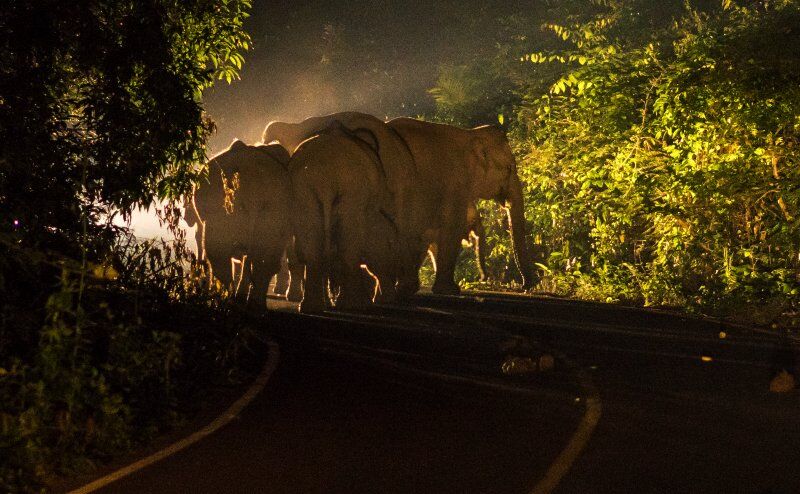
Established in 1962, Khao Yai was Thailand’s first national park and, at 2,166 sq km is its third largest. The park is especially well known for its dramatic waterfalls. A winding road through the mountains leads up to the Haew Narok fall where in the wet season months a roaring cataract vaults off a 50-metre cliff.
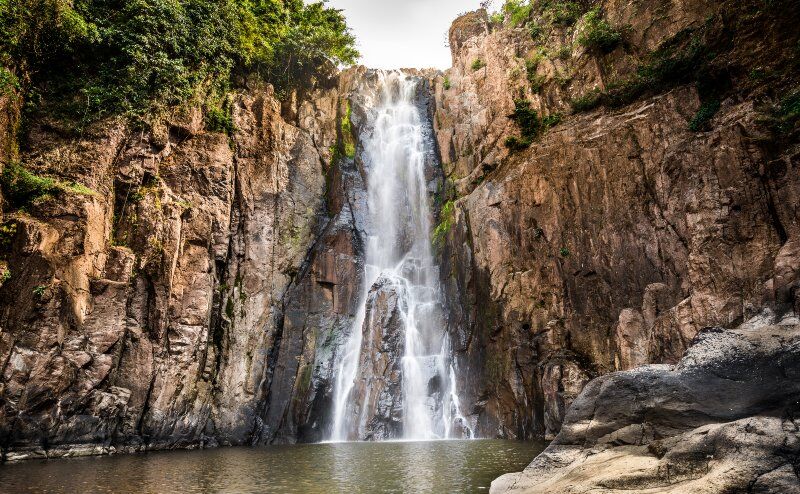
The place-name translates aptly as “Chasm of Hell” although Hell was never this wet. Just standing near the falls means that you’re soon misted with spray, not an unwelcome sensation in humid Thailand.
Where to stay in Khai Yai National park
If wildlife watching is top of your list of things to do in Thailand, then Khai Yai is a must. From birdwatching to seeing elephants wandering freely, a few nights staying on the edge of the park is a good idea.
* Lala Mukha Tented Resort – Safari tents and treehouses
* Hidden Village Khao Yai – Deluxe rooms and private pool villa
How to get to Khao Yai National Park
Khao Yai National Park visitor’s centre is about 200km from Bangkok. There are bus and train services from the capital, but you will need to join a tour or hire a driver to best experience the park.
When is the best time to visit Khao Yai
November to April is the best time to experience all Khao Yai offers. January to March is the coolest time and well suited to hiking. November and December are ideal for a balance between the rain and the heat.
Khao Sam Roi Yot Marine National Park
Sam Roi Yot National Park (“Three Hundred Peaks”), 60km north of Prachuap Kiri Khan town encompasses almost 100 sq km of Andaman shores, mangroves, freshwater marshes and hills. Founded in 1966, it was Thailand’s first coastal national park. November to February is high season here for migrating birds but long-tailed macaques can be seen year-round in the trees and by the roadside.
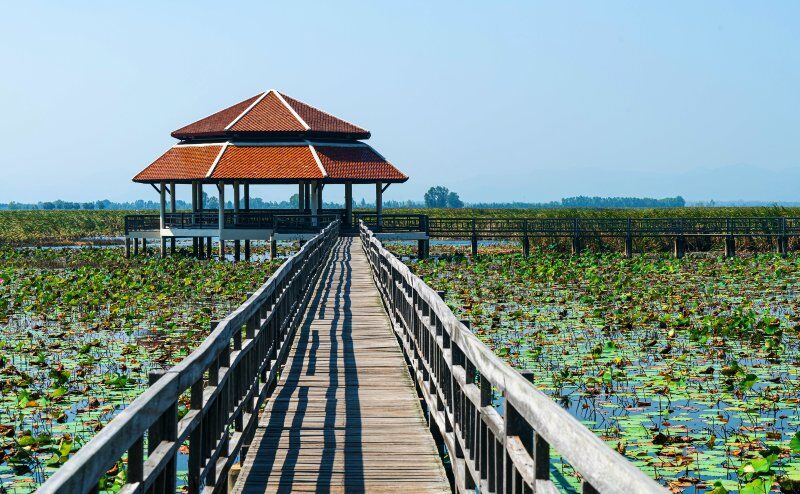
Inland of the coastal plain the park climbs towards the ancient Tenasserim Hills (the border between Thailand and Myanmar), where the limestone terrain hides numerous caves. The spectacular Tham Phraya Nakorn cavern here is probably the most photographed cave in Thailand.
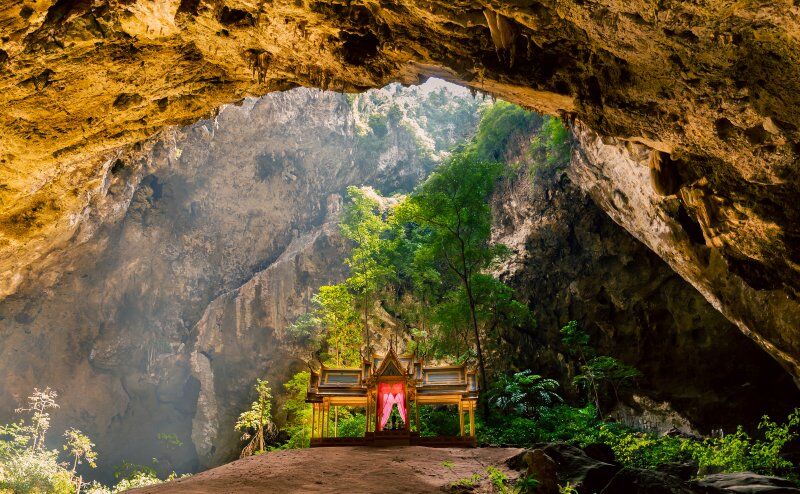
An moderate to challenging, half-hour bush hike brings you to this huge, open-sided sinkhole at the bottom of which sits a delicate pavilion that looks like a small Buddhist temple. It is in fact a royal sitting-room built for the reformist monarch, King Chulalongkorn, aka Rama V, who visited and prayed here in the late-19th and early-20th centuries.
If you don’t mind a challenge, the hike to Khao Daeng Viewpoint is worth the effort.
Where to stay Near khao Sam Roi Yot
Spend a few days here if you want to explore the rich marine life. There are some budget hotels nearby, but for a bit of a splurge Pranburi about 20 minutes south makes a great base.
We like Aleenta Resort or Wyndham Hua Hin in nearby Pranburi. If you would like to be a little closer, consider Dolphin Bay Resort.
How to get to Khao Sam Roi Yot Marine National Park
Located in Prachuap Khiri Khan Province, Sam Roi Yot is 60km from Hua Hin and approx 3 hours drive from Bangkok. You can take the train from Bangkok to Sam Roi Yot, but you will need a driver or car to explore the park.
When is the best time to visit Khao Sam Roi Yot
Khao Sam Roi Yot National Park can be visited year-round and while you may encounter rain between May and October, it’s not usually heavy..
Doi Inthanon National Park
Doi Inthanon park, one of Thailand’s original 14 national parks, was named in honour of the last Lanna king of Chiang Mai who had worked to preserve the country’s northern forests. Its centrepiece is the 2,565-metre Doi Inthanon mountain, Thailand’s highest peak.
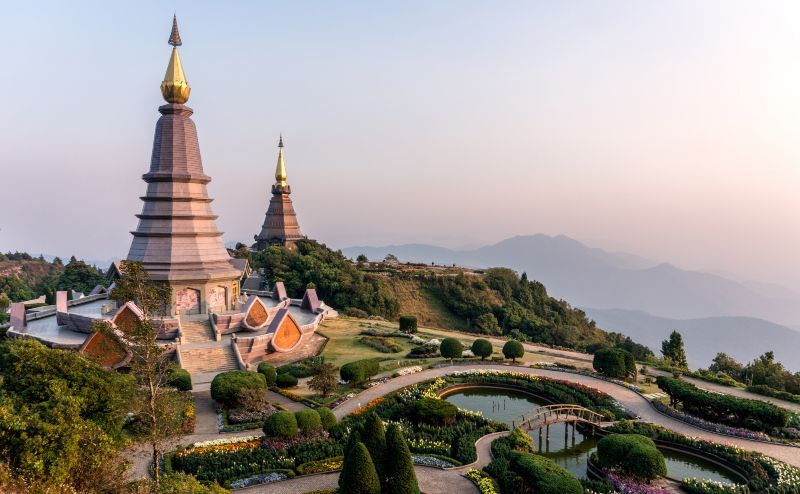
Located 100km from Chiang Mai, the 500 sq km reserve is a popular day or overnight trip from the northern capital.
Climbing, first by vehicle and then on foot, you reach the summit area which has monuments, extensive paths, raised walkways and viewing platforms.
Evergreen forests, waterfalls, orchids, epiphytes and swirling mists are among the almost-alpine surprises here.
How to get to Doi Inthanon National Park
If you don’t have your own car, you can book a seat on the yellow songthaew that leaves from the Chiang Mai Gate. This will take you to the village of Chom Thong where you will take another songthaew to the top of the mountain.
When is the best time to visit Doi Inthanon National Park
During the April to November wet season, the rainfalls can be sudden and spectacular, so come prepared. It’s also worth noting that temperatures on the mountain are usually 10 degrees cooler than in Chiang Mai.
Where to stay near Doi Inthanon National Park
Most visitors stay in Chiang Mai however there are a number of villages closer to the park that offer homestay or basic hotel rooms. We like the look of Suan Sook Homestay and Sandee Place Mountain View Chomthong.
Check out our guide to choosing a tour to Doi Inthanon from Chiang Mai.
Tham Luang Khun Nam Nang Non Forest Park
Yes, it’s a mouthful of syllables. The park, also written as Tham-Luang Khunnam Nangnon, is a 40-minute drive from the northern city of Chiang Rai and is home to the “Great Cave of the Sleeping Lady”.
This cavern, deep in the park, was relatively unknown beyond the province until 2018 when the whole world suddenly focussed on it and the spectacular rescue of 13 young Thais who had become trapped deep in the cave’s flooded tunnel system.
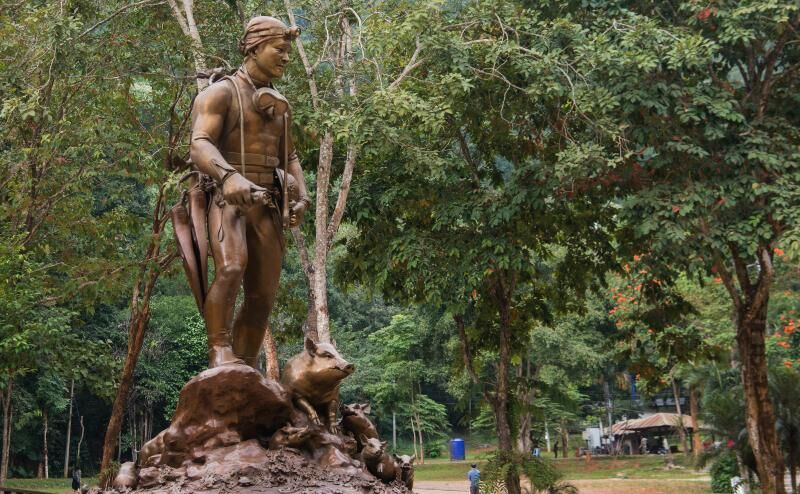
“Tham Luang Rescue Cave” is open to the public between November and April. Visitors can explore the giant entry chamber and climb to its spirit house altar. A narrow passageway then burrows deep into the karst limestone system for almost ten kilometres, running towards the Thai-Myanmar border.
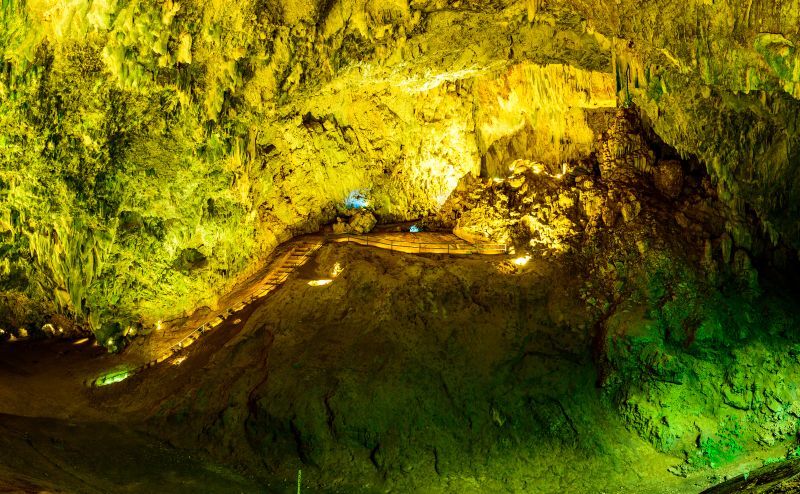
These days, however, less than the first kilometre is open to walkers. Thai National Parks administration isn’t taking any chances with thrill-seekers tempted to see how far they might explore the infamous, claustrophobic tunnel.
The arrival area around the cave entrance has become almost a “Rescue” theme park, with murals, detailed maps, statues, a recreated tunnel section, and Buddhist shrines.
How to get to Tham Luang Khun Nam Nang Non
The park is 40km from Chiang Rai about 6km south of Mae Sai. A shuttle service operates from Mae Sai.
Best time to visit Tham Luang Khun Nam Nang Non
The park is closed for the wet season between May and October.
Where to stay nearby
Most people stay in Chiang Rai, but we found a great hotel, the TEVA Valley Resort, just 6 minutes’ drive from the park, is a great base for exploring this park and the nearby Golden Triangle region.
Mu Koh Similan and Mu Koh Surin National Parks
Divers and snorkellers rave about these adjacent Andaman Sea marine national parks that sit around 70km off the coast, northwest of Phuket and Khao Lak. There are dramatic swim-through reefs, superb corals and huge fish varieties, plus waters of extraordinary clarity.
The 11 Similan Islands of the southern archipelago have been a marine park since 1982 and are home to morays, mantas, lionfish, giant grouper and leopard sharks.
Koh Similan to the north offers snorkelling in the equivalent of a marine rainforest amid anemones, sea fans, plate corals, parrotfish and fusiliers, to name just a few species.
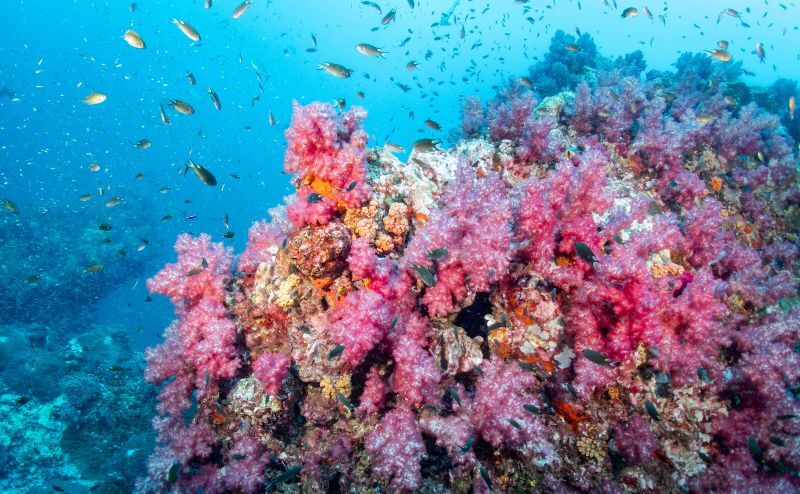
The forested Koh Surin Islands are home to several Moken or chao lay (“people of the sea”) communities, but here too the real draw card is underwater. This mini-archipelago of five tiny islands is part of a 135 sq km marine national park not far south of the Thailand-Myanmar sea border.
If possible, the waters here seem even clearer and the coral gardens more flamboyant than those of Koh Similan. Further north is the park’s fabled limestone pinnacle, Richelieu Rock where scuba divers on live-aboard boats frequently encounter whale sharks, rays and hammerheads.
Getting to Mu Koh Similan and Mu Koh Surin National Parks
Speedboats depart from mainland piers at Khao Lak for the Similans and Khuraburi for Koh Surin; the crossing takes about one hour.
When is the best time to visit these parks?
The islands are open from around October to May and closed during the monsoon season. There is very limited accommodation, mostly in tents and campsites, so advance booking is highly recommended. Avoid the crowds during Thai national holidays who come to enjoy the white beaches and protected areas.
Where to stay in the Similan Islands
Staying for a few days will give you chance to meet the local wildlife. Sea turtles top the list. There are no hotels on the island but there are some basic bungalows and campsites. Alternatively, stay in nearby Phangnga. The Aleenta Resort and Spa is a great choice.
Koh Tarutao National Park
Koh Tarutao in the Malacca Straits was once a Thai version of France’s infamous Devil’s Island prison. During World War II many Thai prisoners here (and their guards) turned pirate — on the island you’ll learn the full, dramatic story.
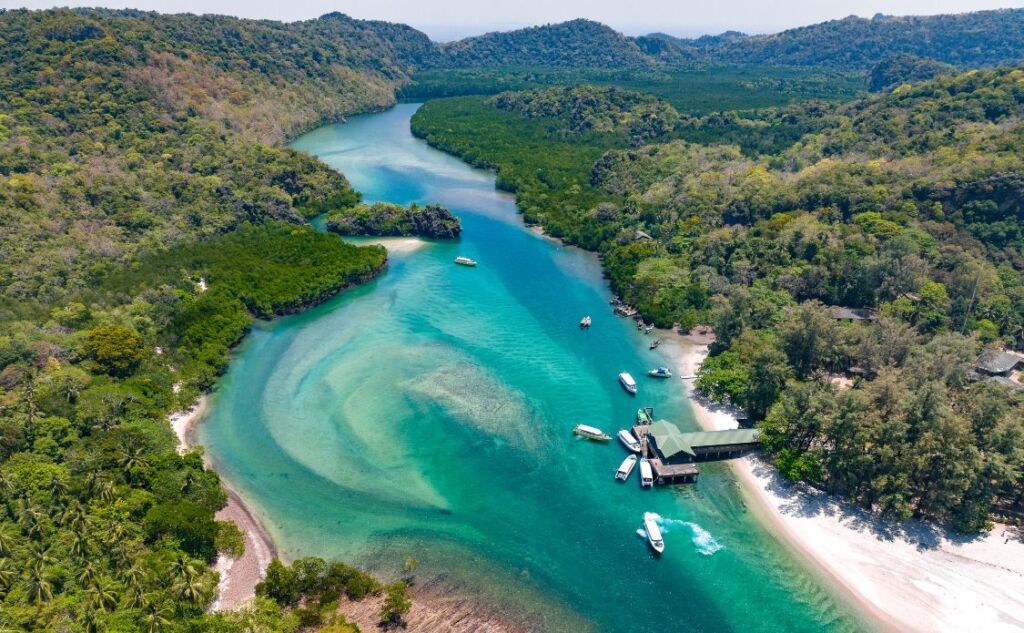
Since 1974 this 152 sq km island on Thailand’s far southern Andaman coast has been a marine national park, a realm of sea-eagles, monitor lizards (some the size of small crocodiles) and beaches that are impeccably “unimproved”.
The overall marine park is a water world of jungles and towering rock formations, and consists of the 51 uninhabited islands of the Tarutao, Klang and Adang sub-archipelagos.
How to get to Koh Tarutao National Park
Located in Satun Province, Koh Tarutao is most often reached by a two-hour speedboat trip from the mainland port of Pak Bara. Check out Phuket Ferry for options.
When to visit Koh Tarutao National Park
Visiting season is from November to April, with the islands closed during the monsoon.
Where to stay near Koh Tarutao National Park
As the largest island in the group, it offers basic bungalow accommodation, which is administered from its onsite National Park office. Thai National Parks (www.dnp.go.th).
Ao Phang Nga National Park
The uninhabited, jungle-cloaked islands of Phang Nga Bay jut from the sea like dragons waking on the morning of the earth. Bordered to the west and east respectively by the circus sands of Phuket and Krabi, the bay — one of the most beautiful on earth — sits in extreme contrast to its mainland “Touristan” cousins.
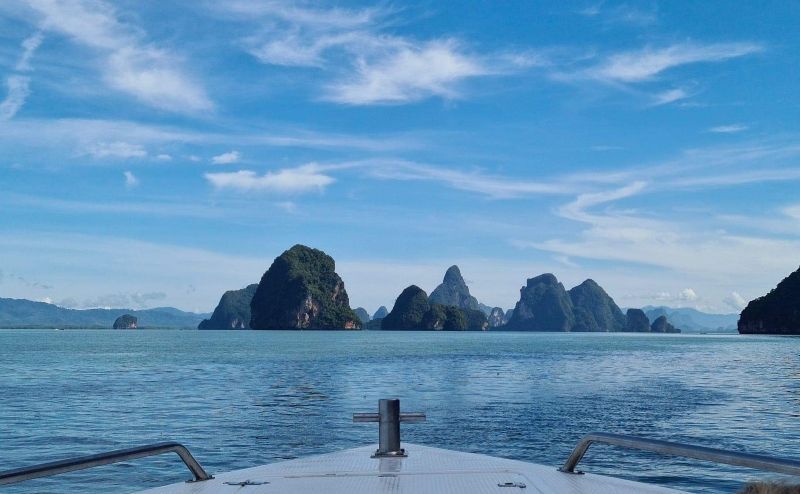
To explore the waters of this numinous national park, you may join a day trip cruise or perhaps a sea-kayaking excursion to the bay’s sea caves. There are several islands to explore and most tours will include the iconic James Bond Island.
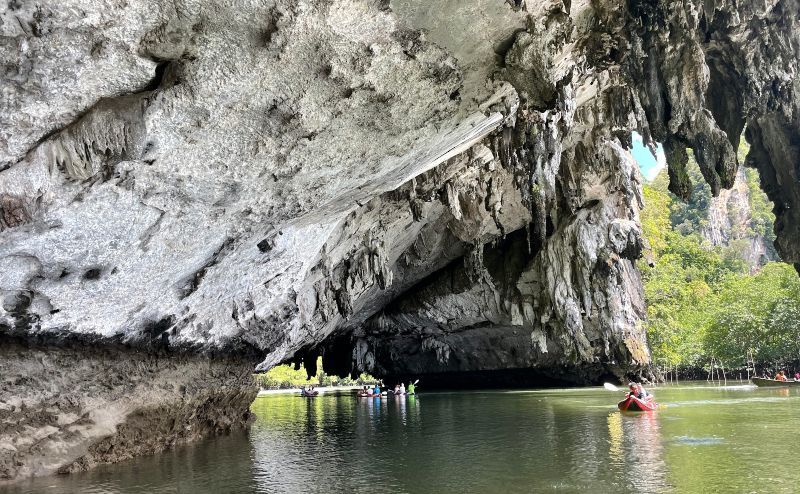
How to get to Ang Thong national park
You can book a boat tour to visit the park. There are loads of options and you can leave from Phuket or Koh Samui.
When to visit Ang Thong National Park
Visit between February and October for the best experience. The park is closed from November to January.
Where to stay near Ang Thong National Park
Accommodation in Phang Nga Bay is mostly on the twin Koh Yao Noi Islands at resorts like Six Senses, Koyao Island Resort, Cape Kudu Hotel, Koh Yao Yai Village, and Tree House Villas – Adults Only, or at Phuket mainland resorts like COMO Point Yamu.
Tours to Ang Thong National Park
If you want to visit the island made famous by the Man with the Golden gun, then by all means book a tour of James Bond Island, but our advice is to book an early bird tour and see it before the crowds arrive.
Other popular Thai national parks
Don’t stop exploring National Parks in Thailand when you get to the end of the list. Here are some more special places to discover.
- Kaeng Krachan National Park – near Hua Hin this is Thailand’s largest national park.
- Pang Sida National Park – in Sa Kaeo Province in eastern Thailand, home of the beautiful Pang Sida waterfall
- Erawan National Park – home of the stunning Erawan Falls and a popular destination to add to your Kanchanaburi itinerary.
- Chet Sao Noi Waterfall National Park – only 160km from Bangkok head here for the seven-level waterfall
- Kui Buri National Park – According to officials at Thailand national parks this is the best elephant-watching spot in the country.
- Phu Kradueng National Park – long hiking trails, stunning waterfalls and easy access by public transport make this a local favourite.

Entrance to National Parks for non-Thai adults is usually 400 baht and 200 baht for children.
Author: Australian writer John Borthwick has covered Thailand for years, from Songkran to Loy Krathong, and is still finding new stories to write. Hill country, islands and khao niaow mamuang (mango sticky rice), he revels in almost everything about the country, with the possible exception of double pricing. And once walked across Thailand in half a day — true.
Heading north? Check out our tips for touring Doi Inthanon.
